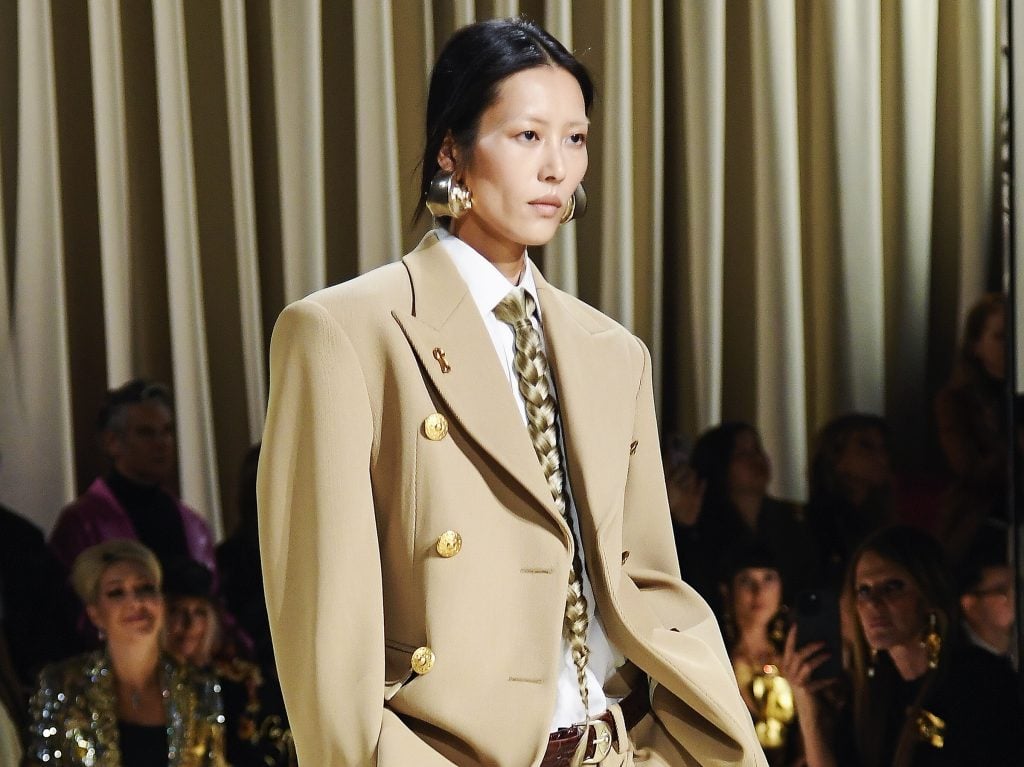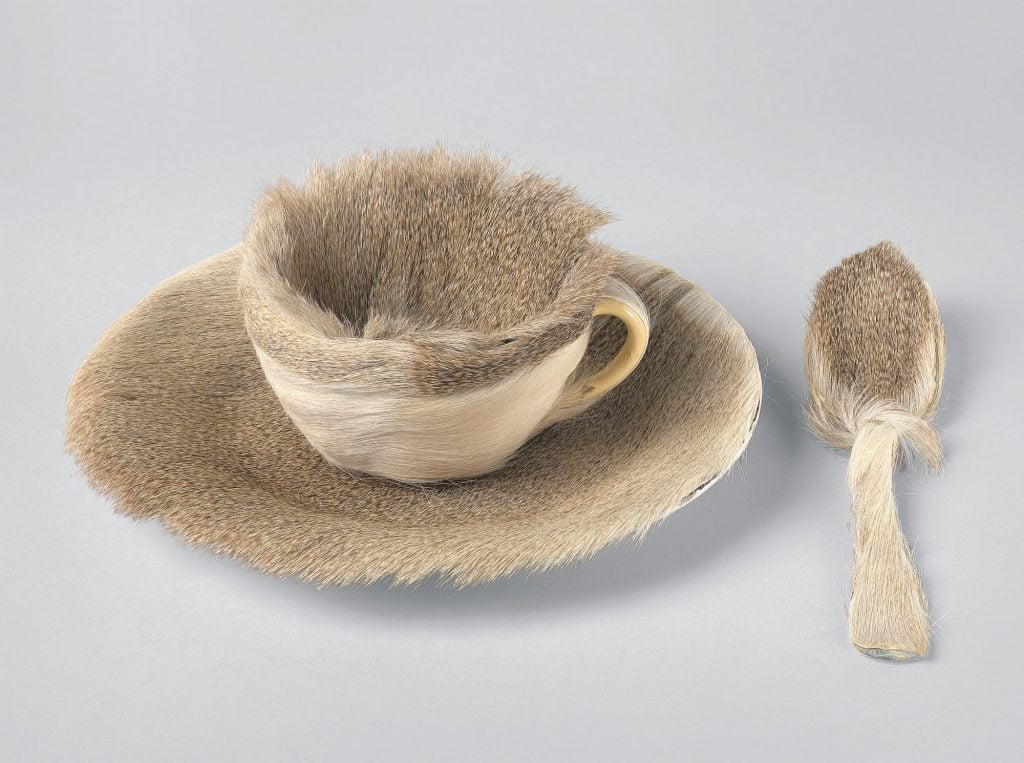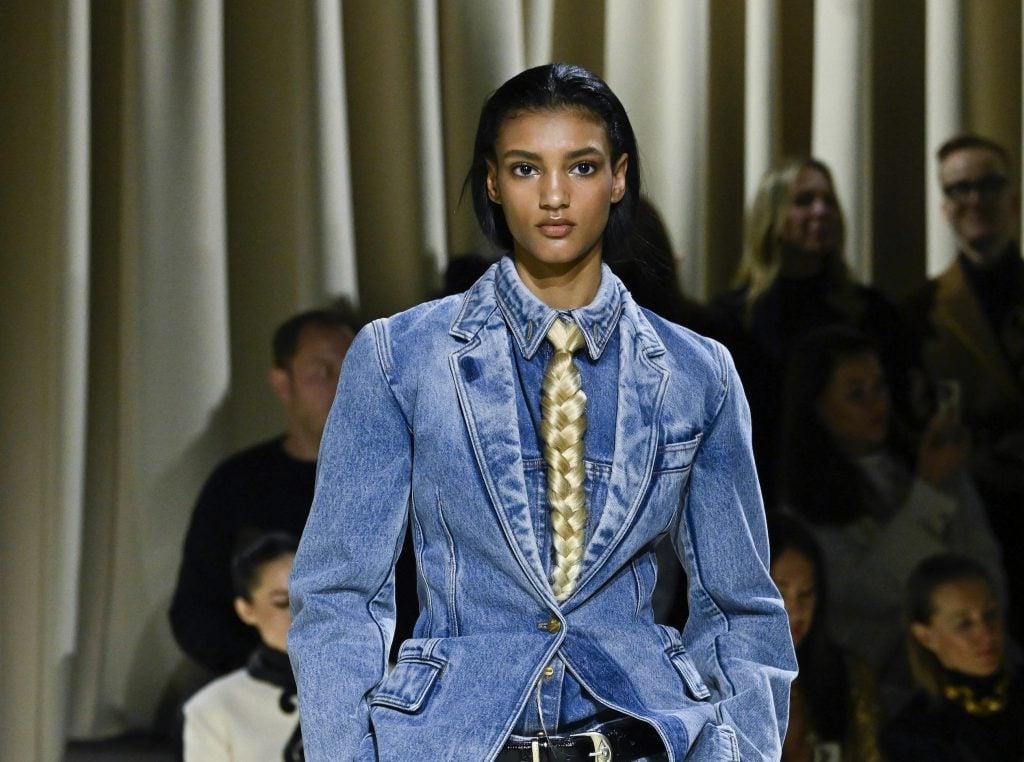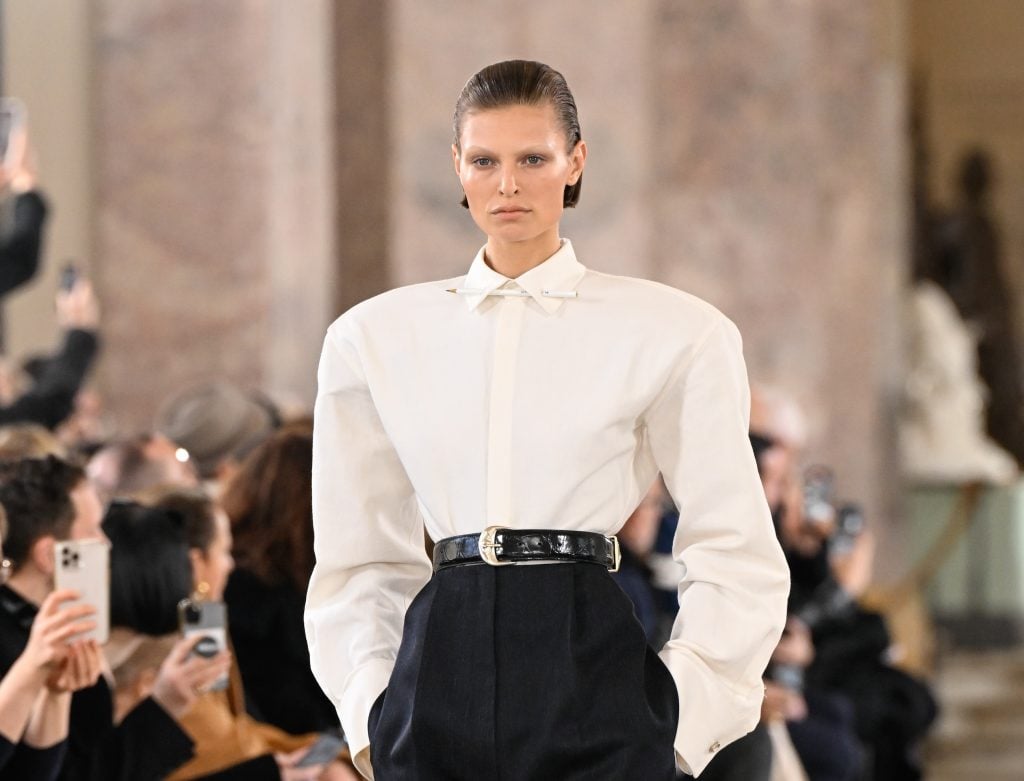Art World
The Surrealist Roots of Schiaparelli’s New Braided-Hair Tie
The hairy accessory has roots in works by Meret Oppenheim, Mimi Parent, and Pippa Garner.

The hairy accessory has roots in works by Meret Oppenheim, Mimi Parent, and Pippa Garner.

Artnet News

This spring, Schiaperelli sent models down the runway at Paris Ready to Wear Fashion Week sporting ties made out of braids of actual hair in shades of blond or black, depending on the colors of the outfits, which included skirt suits or pantsuits. The accessory sent the design world into quite the tizzy—but it also boasts deep roots in surrealism.
The use of hair calls as far back to Surrealist artist Méret Oppenheim, specifically a bracelet that the house created based on her design nearly 90 years ago. In 1936, she successfully proposed a metal bracelet with an exterior covered in hair. According to Schiaparelli, Pablo Picasso then met the artist at the Café de Flore while she was wearing the bracelet and mentioned that one could make anything from the same material. Thus was born the idea for the work that Oppenheim is perhaps best known for: her fur-lined teacup, Object (1936).

Méret Oppenheim, Object (Objet) (1936). Photo courtesy of the Museum of Modern Art, New York.
Two decades later, Mimi Parent, another artist working in a surrealist mode, would create a work using hair in an uncanny way. Her 1959 Masculin-Féminin shows a cropped shot of a model in a suit wearing a tie made from hair. The image was used on the announcement for the 1959–60 International Exhibition of Surrealism at Paris’s Galerie Daniel Cordier. (Fittingly, the new looks by the house, which has had ties with the likes of Magritte and Dalí, arrive on the the centennial of the art movement known for whimsy and absurdity.)
Years on, contemporary artist Pippa Garner, who has long toyed with fashion partly as a way to poke fun at gender norms, would revive that idea. In the late 1980s, she proposed a tie that braided the hair together, providing an even closer precedent for the Schiaparelli design.

A model on the runway at Schiaparelli Ready to Wear as part of Paris Ready to Wear Fashion Week on February 29, 2024 in Paris, France. Photo: Giovanni Giannoni/WWD via Getty Images.
As it happens, it’s not the first time Schiaparelli has called back to a Garner work. At Paris Couture Week this past winter, Schiaparelli rolled out a shirt with a pencil stabbed through both wings of its collar—a concept that had already shown up in Garner’s own designs decades before.

Model on the runway at Schiaparelli Couture Spring 2024 as part of Paris Couture Fashion Week on January 22, 2024 in Paris, France. Photo: Giovanni Giannoni/WWD via Getty Images.
In fact, as Fiona Alison Duncan, co-curator of Garner’s 2022 show “Act Like You Know Me,” highlighted on X, Schiaparelli is not the only house to borrow liberally from Garner’s oeuvre. In an Instagram post earlier this year, she showed how Garner’s ideas have shown up in the creations by the likes of Jeremy Scott, Fendi, and Miu Miu.
Many of these designs, such as the Half-Suit and Add-A-Heel, are included in Garner’s tongue-in-cheek publication, Better Living Catalog, first released in 1982 and republished last year. In a new epilogue, the artist described how the consumerism boom of the 1950s inspired her to “save some of the choice examples of the appliance avalanche by reinventing them as objets d’art.”
As for seeing her designs newly revived on the runway, Garner doesn’t seem to mind.
“It has spawned another version of itself, and maybe that one will do the same in another couple of decades,” she told the Washington Post. “I think it’s fine. I have no objection to it. I consider it, if anything, flattering.”